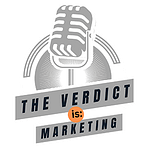
In this episode of The Verdict is Marketing, we explain what Digital Asset Management is for law firms, why it’s no longer optional for legal practices in today’s digital landscape, and how implementing it can enhance your brand, improve collaboration, and boost your marketing effectiveness.
Podcast Resources:
Marketing Your Law Firm? Know the Advertising Rules!
Show Transcript
Kim: Welcome back to The Verdict is Marketing, the podcast for all things law firm marketing. I’m your host, Kim Sailer, and today I’m joined by my co-founder, Todd Blackman.
Todd: Hi Kim, great to be here.
Kim: Today we’re tackling a another but often overlooked aspect of law firm marketing: digital asset management. We’ll discuss what digital assets are, why they need to be managed effectively, and how to leverage tools and technology to streamline the process.
What are Digital Assets?
Todd: Let’s start with the basics. What exactly are digital assets in the context of a law firm?
Kim: That’s a great question. Digital assets are any digital files that your firm uses for marketing and communication purposes. This includes:
- Images: Logos, headshots of attorneys, stock photos used in blogs, infographics, and any other visual content.
- Videos: Client testimonials, firm overview videos, explainer videos, webinars, and social media videos.
- Written content: Blog posts, articles, case studies, white papers, ebooks, and website copy, design files.
- Audio files: Podcasts, message on holds, and any other audio content.
- Presentations: PowerPoint presentations, PDFs, and other presentation materials.
- Website files: Website templates, code, and other website-related assets.
Todd: Essentially, any digital file that contributes to your firm’s marketing efforts can be considered a digital asset.
The Need for Digital Asset Management
Kim: So, why is it critical for law firms to actively manage these assets? There are several reasons:
- Brand consistency: Ensuring all marketing materials maintain a consistent brand identity across all channels. Do you still have photos and bios of attorneys on your website who haven’t worked at the firm for years.
- Increased efficiency: Streamlining workflows, reducing search times, and improving overall productivity. Think about the times you and your colleagues have run around trying to find files or assets or looking for the most recent version of something.
- Improved collaboration: Facilitating easier sharing and collaboration among team members. Your team can all work in the files at the same time with the right version.
- Enhanced security: Protecting valuable assets and potentially client data from unauthorized access or loss with access control and encryption.
- Cost savings: Avoiding the costs associated with recreating or repurposing lost or misplaced assets.
- Improved SEO: Optimizing images and other assets with relevant keywords can improve search engine rankings.
Todd: I agree. A well-organized digital asset library can significantly improve the efficiency and effectiveness of your marketing efforts. You don’t want to damage your reputation. You don’t want to appear disorganized and unprofessional as that will cost you clients.
Digital Asset Management (DAM) Tools and Solutions
Kim: That is so true. So, what tools are available to help law firms manage their digital assets? What should firms be looking at?
Todd: Digital Asset Management (DAM) systems are specifically designed for this purpose. Think of it as a central library. These platforms offer a centralized repository for storing, organizing, and managing all your digital assets allowing you more time to serve your clients.
Key features of DAM systems:
- Centralized storage: Store all your assets in one secure location, making them easily accessible to authorized team members.
- Metadata tagging: Add descriptive metadata (keywords, tags, captions) to each asset for easy searching and retrieval. You could search for client name, file type like brochure, file date, etc.
- Version control: Track changes and revisions to assets, ensuring everyone is working with the latest versions.
- Workflow automation: Streamline workflows for asset approval, distribution, and publishing.
- Collaboration tools: Facilitate collaboration among team members with features like shared folders, comments, and approval workflows.
- Integration with other tools: Integrate with other marketing and design tools (email platform or social media management software) to streamline workflows and improve efficiency.
- Analytics: Understanding asset usage and effectiveness. You can track how your digital assets are being used, which ones are most popular, and which ones are driving the most engagement.
Popular DAM systems
Kim: That’s impressive. Can you give us some examples of popular DAM systems (software/platforms)?
Todd: Certainly! Some popular DAM systems include:
- Bynder – Bynder is very user friendly and integrates well with other marketing tools. It’s a good tool for smaller firms or firms just starting out with DAMs.
- Canto – Canto is good a good solution for medium to large sized firms with more complex needs and more digital assets to manage. It can scall up as your firm grows (user and assets) and has powerful search capabilities. And, the search is customizable to fit the firm’s needs
- MediaValet – MediaValet is big on security and compliance. It has many security features like access control, encryption and backups.
- Adobe Experience Manager Assets – Adobe Experience Manager or AEM or AEM Assets. AEM is a big player, especially if your firm is already using other Adobe products like Photoshop or InDesign. There is great integration, and everything is in the same ecosystem.
Kim: So before choosing a DAM, you would recommend that you assess your firm specific needs before you look at a platform.
Todd: Absolutely. Each one has its own strengths and weaknesses. You’ll want to consider how many users need access, the types of files you will be managing, the budget, ease of use, the integration with other tools, and the security features.
The Role of AI in Digital Asset Management
Kim: AI is transforming many aspects of legal practice. How is it impacting digital asset management?
Todd: AI is playing an increasingly important role in streamlining and improving the efficiency of DAM systems.
- AI-powered tagging and metadata generation: AI can automatically analyze and tag assets with relevant keywords, making them easier to find and search.
- Automated workflows: AI can automate routine tasks such as asset ingestion, categorization, and quality control.
- Improved search capabilities: AI-powered search engines can quickly and accurately locate specific assets based on visual and semantic cues. AI goes beyond Keywords and tag. AI actually understands the content of your files and conduct searches based on that. Tell AI to search for a photo of a courtroom and it will provide you with all your courtroom photos even if you don’t have that keyword in the metadata.
- Usage Predictions: Suggesting relevant assets (content) based on past patterns and help you pick ones most useful to your needs.
- Content Generation: Creating variations of existing assets. It can take your newsletter and create various version to target your clients and specific audiences. It can have different headlines, images, etc.
- Content Analysis: Extract text from images and documents
- Enhanced security: AI can help identify and mitigate security threats, such as unauthorized access or data breaches.
Best Practices and Ethics
Kim: Okay, we need to mention the ethical considerations. If any of your digital assets contain client data, it is your responsibility to protect that client’s confidentiality. This includes any tools like DAM that you may use. You also need to make sure your digital assets follow your state bar’s advertising rules.
Conclusion – Digital Asset Management
Kim: Implementing a robust digital asset management strategy is vital for any law firm that wants to maximize the effectiveness of its marketing efforts.
Todd: It’s important to find a DAM partner you can trust and understand the unique needs and challenges of the legal industry (whether for use in marketing or case management needs).
Kim: Definitely. Digital asset management is no longer an optional extra for law firms, it is a fundamental component of success in today’s world. Law firms that embrace these technological advancements will be the ones that shape the future of the legal profession.
Kim: Thanks, Todd. That was a very informative discussion.
Todd: My pleasure, Kim. Hope the listeners find it valuable and insightful. I encourage them to continue exploring this fascinating topic.
Kim: If you’d like a full transcript of today’s episode, please visit us at lawbard.com/verdict. You can also check out the show notes for any links or resources we’ve mentioned. You can also reach me at Kim@lawbard.com or visit us anytime at lawbard.com. Thanks for listening, and until next time, The Verdict is Marketing is adjourned.












